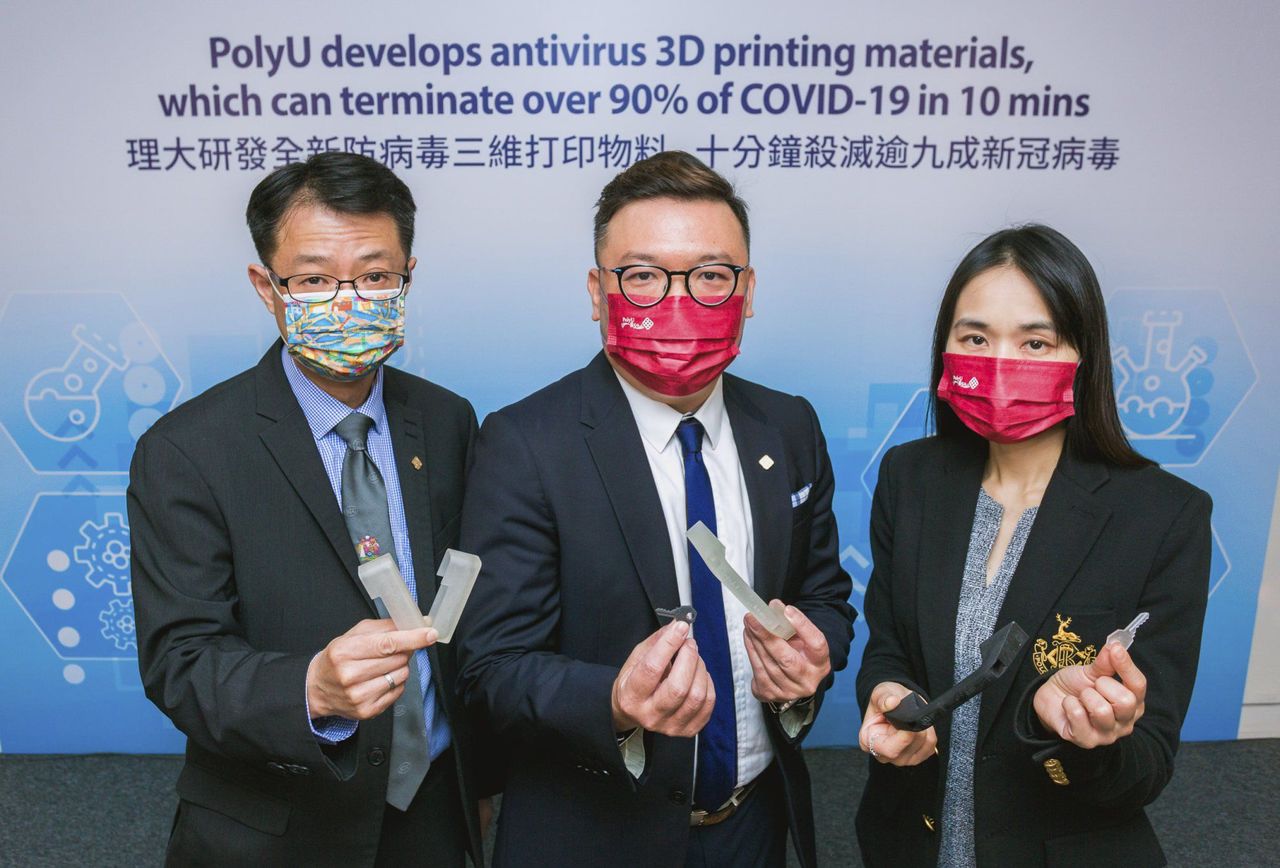Research team engineers 3D printing material that kills all viruses and bacteria within 20 minutes.
Researchers from a Hong Kong university have developed the world’s first 3D printing material with a surface that can kill the coronavirus within 20 minutes and be used to produce low-cost, durable lift buttons and door handles to reduce infection risks.
The seven-member team from the Hong Kong Polytechnic University started the research project in July 2020. They added antiviral agents to resin, the main component of the 3D printing material, to kill viruses and bacteria by piercing their cell membrane and destroying their structure.
Research leader Chris Lo Kwan-yu, an associate professor of the university’s institute of textiles and clothing, said the laboratory tests had shown that the material could kill more than 90 per cent of the coronavirus as well as other common viruses and bacteria on the surface within 10 minutes, and wiped out more than 99 per cent within 20 minutes.
The team also accelerated the ageing of the material in their laboratory tests to study its effectiveness and durability, and found that it could still kill more than 90 per cent of the coronavirus within 10 minutes after a year, and nearly 85 per cent of it after three years.
Over the past year, the researchers collaborated with the Home Affairs Department, the Hong Kong Wetland Park and an environmental organisation to produce recycling bin handles, toilet doorknob covers, lift buttons and Braille boards in public areas.
 (From left to right) Professor Kan Chi-wai, Associate Professor Chris Lo, Assistant professor Amber Chiou.
(From left to right) Professor Kan Chi-wai, Associate Professor Chris Lo, Assistant professor Amber Chiou.
After one year’s use, they detected no traces of coronavirus or other common viruses and bacteria on them.
“The material is durable with a long-lasting effectiveness,” Lo said at a press conference on Thursday.
“Using 3D printing technology, it can be produced in different forms catering to different needs. It is therefore highly flexible and can be used extensively in public facilities to provide epidemic prevention support to the community,” he said.
Professor Kan Chi-wai, a project member, said the disinfection components of the material were embedded in the products rather than coated on the surface, preventing daily cleaning from compromising its antivirus performance.
He added that the efficacy rate of the material would only diminish gradually after three years of use.
Assistant professor Amber Chiou Jia-chi said it could also eliminate variants because it physically attacked viruses’ membranes, regardless of what proteins they contained.
The team announced it would collaborate with the Sham Shui Po district office to make doorknob protective covers for more than 100 poorly maintained buildings that lacked any management organisations.
They also said they would consider applying the material to primary and secondary schools, health care facilities, and public transport.
Lo said they had filed a patent application for the technology and would prioritise producing lift buttons with Braille dots for visually impaired persons and also handles to reduce any contact transmission of the virus.
He said the cost of production was low, at less than HK$20 (US$2.50) for printing a lift button, but the process could be time-consuming. A handle would take six to seven hours to be printed, according to Lo.
Earlier in December, a research team from the University of Hong Kong announced it had developed a stainless steel which could kill the Covid-19 virus on its surface within hours by adding copper to the usual mix of metals.















